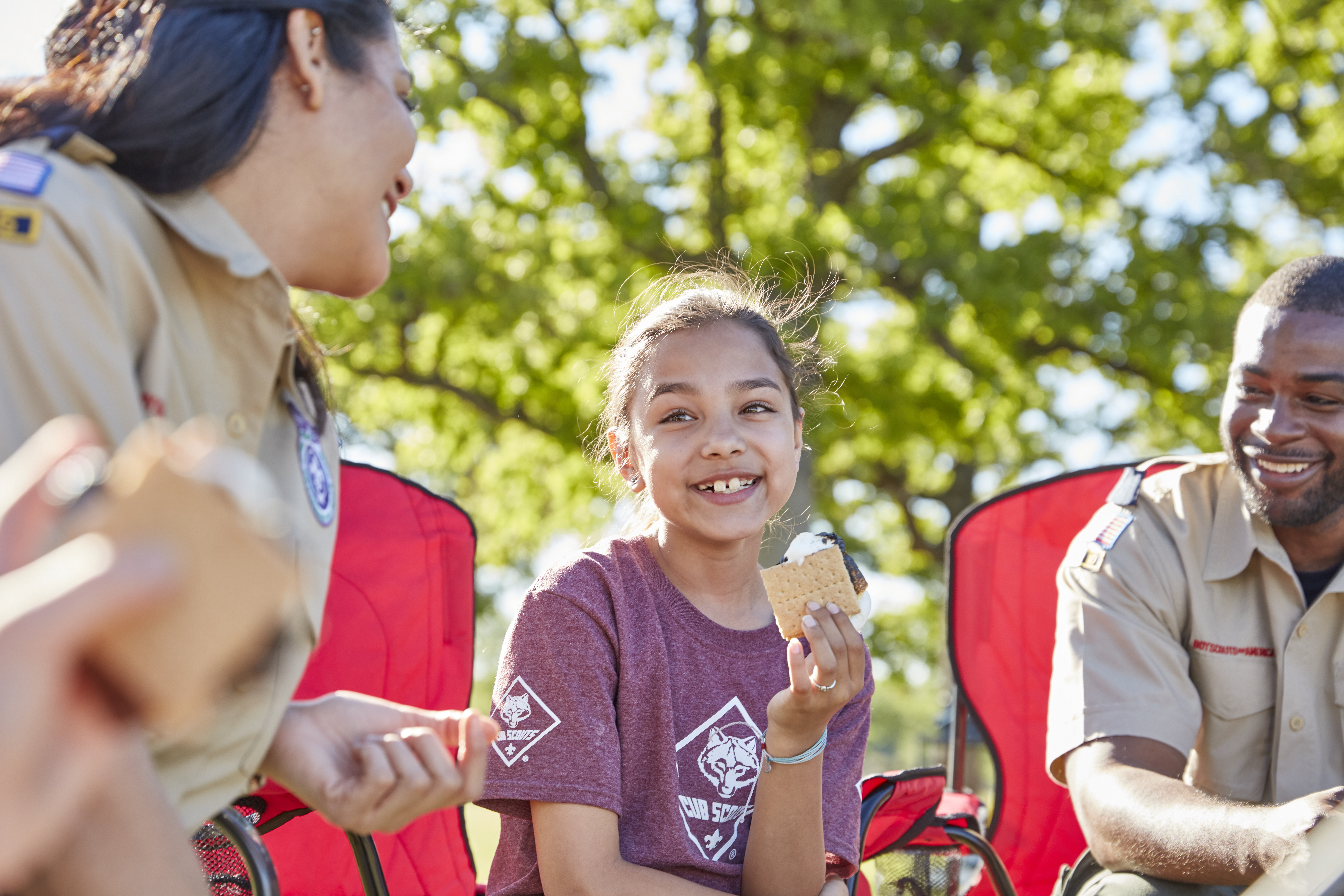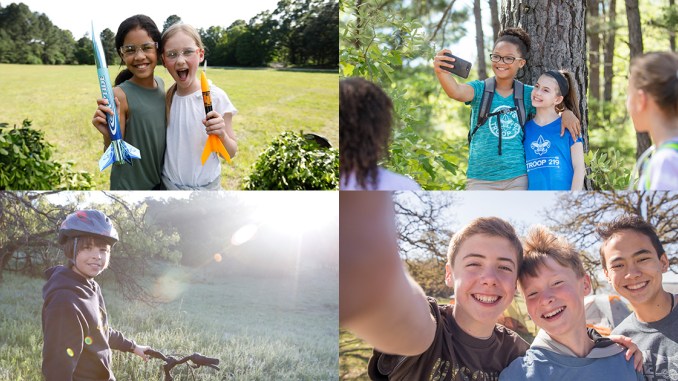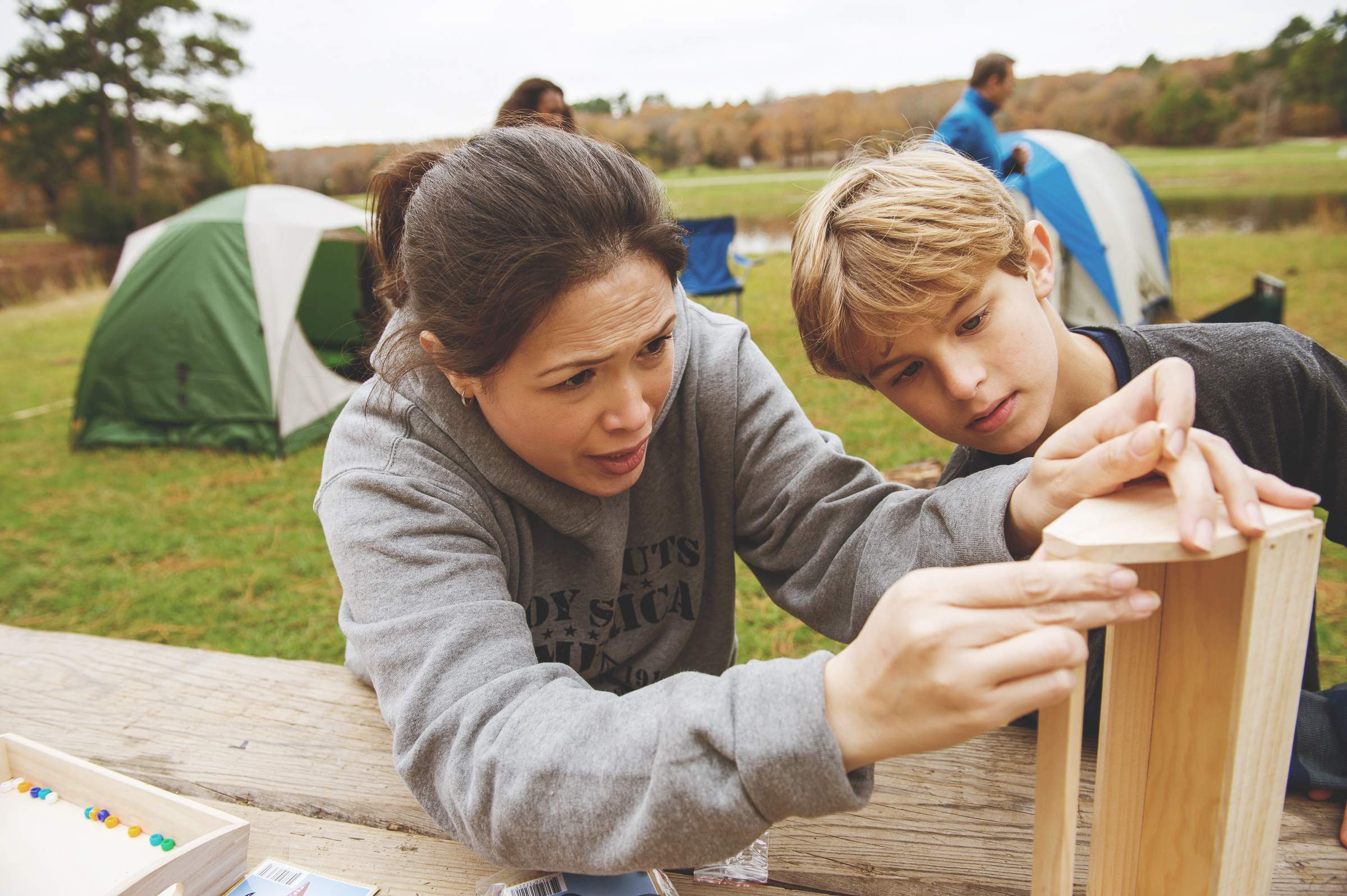Webelos To Scout Guide for Scouts and Parents
Webelos to Scout Transition
It is an exciting time to be involved in Scouting and for you and your parents, making the transition from a Cub Scout Pack to a Scouts BSA can be a big step. The New Birth of Freedom Council wants every Scout that is interested in continuing his or her Scouting career to find the troop that is the best fit for the next part of your Scouting adventure.
As you are finding the right fit, it is important that you know how the programs work including what is the same and different. It is also important to know that the transition is a process and that you have good tools to help you make the best decision.
As you will read, your Webelos Den Leader and Cubmaster can be helpful in connecting you with local troops. If during the course of this process, you have questions that your Webelos Den Leader or Cubmaster can’t answer, please don’t hesitate to reach out to your District Executive or your District Membership Chair. They will be happy to assist you through the process.
Resources
- Webelos to Scout Transition Family Guide
- Questions to Ask When Visiting a Troop
- Webelos Troop Visit Checklist
- Parents Troop Visit Checklist
- BeAScout.org
- National Webelos to Scout Transition Resources
About the Transition
Scouting offers a continuous program that becomes progressively more challenging.
Cub Scouting takes place largely in the family. The Scouts BSA program is designed for boys and girls ages 11 through 17, who are old enough to be on their own in the out-of-doors. While adults serve as key leaders, Scouts hold leadership positions and plan the troop’s program.
The passage from Cub Scout pack to a Scout troop should be smooth, with no time lost in between. By the time your Arrow of Light Scout is ready to cross over, you should be familiar and comfortable with the youth and adult leaders of a troop, their role in the troop and troop activities, and feel excited about beginning this new adventure.
The transition is not just the ceremony of bridging from one unit to the next. The ceremony is the culmination of events that help set a Scout on the next stage of their Scouting career.
Eligibility
Youth can join Scouts BSA if they have completed the fifth grade and are at least 10 years old, OR have earned the Arrow of Light Award and are at least 10 years old, OR are age 11 but have not reached age 18.
All Arrow of Light Scouts joining a Scouts BSA troop must complete a new youth application. Your Pack or Troop will help you get the appropriate paperwork filled out.
Finding a Troop
Finding the right Scout troop for you is the most important outcome of the Webelos to Scout Transition Process. So how do you find the right one?
A great place to start is a local troop. Many packs have a troop at the same chartered organization (meeting place). This is a unit that may meet a different night of the week, but has a history of having Webelos transition from the pack to that troop. Usually, your den leader or cubmaster will already have a connection and help set you up with a visit.
Looking for something different? Just like when you join a Cub Scout Pack, you can discover nearby Scouts BSA troops using BeAScout.org. Here you will find the troops closest to you and the contact information for the troop leadership.
Take troops up on their offer to visit. Many troops will invite Arrow of Light and Webelos Scouts to visit a troop meeting or to attend a troop activity! Go and check it out! Just because you attend one of these events doesn’t mean that you have to join that troop.
How many troops should I visit? As many as it takes to find the right fit. Some Scouts know without visiting any troops the troop that they want to join. A Scout, his or her family, and their den may visit 2, 3, 4, 5 troops before they find the right one for them.
Do I have to go to the troop that the rest of my den is going to? No, Arrow of Light Scouts can join any troop that they wish.
The Troop Visit
Either by invitation or by research, it is important for an Arrow of Light Scout to visit the troop(s) that he or she is interested in becoming a part. As you prepare for your troop visit, we’ve put together some resources below. You will be spending a lot of time with the troop that you choose, so the troop visit should be taken seriously and you should make sure that you have all of your questions answered before you make your decision. A scout can transfer to another troop at any time, but by conducting troop visits, you are more likely to find the right fit right away!
Differences Between Cub Scouts and Scouts BSA
The difference between Cub Scouts and Scouts BSA encompasses critical categories like unit structure, leadership, parental involvement, advancement and camping.
Both programs are built on Scouting’s time-tested values. That’s evidenced by the fact that members of both programs recite the Scout Oath and Scout Law.
Beyond that, though, you’ll find more differences than similarities — for good reason. You wouldn’t teach a third-grader the same way you’d teach a ninth-grader, right? By that same logic, your approach to Cub Scouts and Scouts BSA shouldn’t be the same either.
Below are some examples of how Cubs Scouts and Scouts BSA differ. For a more comprehensive list visit this great article for Scoutwire!
Unit structure
Cub Scouts: Cub Scouts are in dens, which are part of a pack. A den is made up of girls or boys of the same rank. There are two kinds of dens: all-boy or all-girl. A pack can be all-boy, all-girl or include a mix of all-boy and all-girl dens.
Dens usually meet weekly or biweekly; packs meet monthly.
Scouts BSA: Scouts BSA members are in patrols, which are part of a troop. Troops are either all-boy or all-girl. Some leaders form linked troops, which means an all-boy troop and an all-girl troop share a chartered organization and troop committee. Some troops prefer mixed-age patrols (in which an 11-year-old and a 17-year-old could be in the same patrol), while others prefer to keep Scouts of similar ages together.
Troops meet weekly. Patrol meetings typically are part of the weekly troop meeting, but patrols are welcome to meet on their own.
Leadership
It’s pretty simple: Cub Scout dens and packs are led by adults; Scouts BSA patrols and troops are led by the youth.
Cub Scouts: Adults plan and conduct the meetings and promote advancement, teamwork, fun and character-building.
Scouts BSA: The Scouts plan and conduct meetings and outings. Adults step in when asked for help and model good behavior. Youth-led troops might not be as organized or successful as if adults were running things, but kids learn from their mistakes.
Parental involvement
Parents are a critical part of both Cub Scouting and Scouts BSA.
Cub Scouts: The parents are expected to assist the pack with planning or helping with at least one activity or event annually. They may also take a leadership role in the pack or den. Parents are usually required to accompany their son or daughter on overnight campouts.
Scouts BSA: The parents are expected to continuously assist the troop by supporting the Scouts and participating in those tasks that the Scouts cannot do. This may include: transportation to an activity, shopping for a trip or chaperoning a trip. It also may include assisting with fundraisers (finances and organization) and coordinating special events. It is expected that each family take an active role in the troop. Unlike Cub Scouts, parents aren’t required to camp with their sons or daughters. But they’re encouraged to do so if they’d like.
Camping
Cub Scouts: Limited to Scout and parent weekend or day trips. May have some camping in tents or cabins. Summer camp is limited to two or three nights, usually. Campouts usually have a very structured schedule.
Scouts BSA: Monthly or bimonthly camping trips as well as additional outdoor day activities. Much of the program involves activities that can only be done in the outdoors (nature, ecology, pioneering, orienteering, conservation etc.). Also available to the Scout is at least a week of camping each summer. Not every minute of the campout is scheduled. Free time is important. Scouts normally get a couple of hours of free time to hang with friends, walk in the woods, work on advancement, sleep, play sports, or do nothing at all.
Top Ten – Things to Look for in a Troop
When looking for a troop, this is a great list of some of the best things to look for in a local troop.
- Fun – It’s got to be fun! Most of the activities within the troop have to be understood by the Scout as a fun, friendly, pleasurable, and rewarding experience. If a troop is too strict and regimented the Scout will lose interest.
- Program – this is key to a well-run troop. The program has to be planned out by the troop committee with input from the Scouts. This should be done annually and tied to a budget. The program needs to include all the elements of Scouting, weekly troop meetings, monthly outings/events, weekend campouts, and yearly summer camps. The activities have to be new, exciting, and fresh to keep the Scouts interested.
- Adult Leadership – All troops should have ―Trained adult leadership. Trained leaders are crucial to any well-run troop. The training provides the leader with the knowledge to understand the aims and methods of the Scouting program. The training presents a wealth of advice and resources to run a successful program. When you visit a troop, look for the trained patch on the leader’s uniform.
- Youth Leadership – The Scouting program is designed to have the youth elected and appointed into leadership roles. A troop should have periodic elections to fill those positions. In addition, the troop should provide leadership training for those roles. The troop should conduct Junior Leadership Training (JLT) and/or send Scouts to council JLT training. Look for the trained patch on the youth leader’s uniform.
- Boy-Run Troop – the whole philosophy of Scouting is for the Scouts to run the troop. The adult leaders are there to provide guidance, counsel, and support. The weekly meetings, troop campouts, and troop activities should be planned and executed by the Scouts and the junior leaders. The troop should encourage and strive to have its junior leaders run the troop. When observing a troop in action, see if the Scouts are running the program or the adults.
- Patrol Method – A troop should divide its Scouts into patrols of not more than 8. These patrols act like a team within the troop. They will elect a patrol leader and have periodic meetings either at the troop meetings or at a separate time and place. The troop should provide competitive activities at meetings and outings for the patrols to work as a team. This allows them to demonstrate their Scouting skills and plan for camping events or district camp-o-rees. The troop should also have functioning monthly Patrol Leaders Council, which plans the troop activities.
- Meetings – Weekly troop meetings are pretty much the norm in Scouting. The troop should have a calendar for the year with the dates established for regular meetings.
- Uniform – the field uniform is an important part of Scouting and should be required in troop functions, like: ceremonies, religious activities, troop dinners, and district & council events. An activity uniform, which usually consists of a scouting T-shirt and Scout shorts or pants, is commonly used for troop/patrol meetings, day activities, and weeklong camps. Troops may define or require uniforms in different variations, but should have some defined requirements and periodic inspections.
- District & Council Involvement – A troop should have representatives attending monthly district roundtable meetings. The district and council provide a wealth of experience and knowledge to help the troop run a great program. They are a wonderful resource for information on training, activities, advancement, planning, and ideas.
- Recruiting – A troop needs to bring in new Scouts. New Scouts provide the older Scouts with opportunities to mentor and teach them what Scouting is all about. It helps them build leadership and charter. The best source for new Scouts is from the Cub Scouts Webelos program. A troop should have established a working relationship with local Cub Scout pack(s) to help bridge graduating Webelos to Scouts BSA.
Resources
- Webelos to Scout Transition Family Guide
- Questions to Ask When Visiting a Troop
- Webelos Troop Visit Checklist
- Parents Troop Visit Checklist
- BeAScout.org
- National Webelos to Scout Transition Resources
Questions
For more questions about Webelos to Scout Transition, contact your District Executive or your District Membership Chairman.
 New Birth of Freedom Council, BSA Website for the New Birth of Freedom Council, BSA
New Birth of Freedom Council, BSA Website for the New Birth of Freedom Council, BSA
